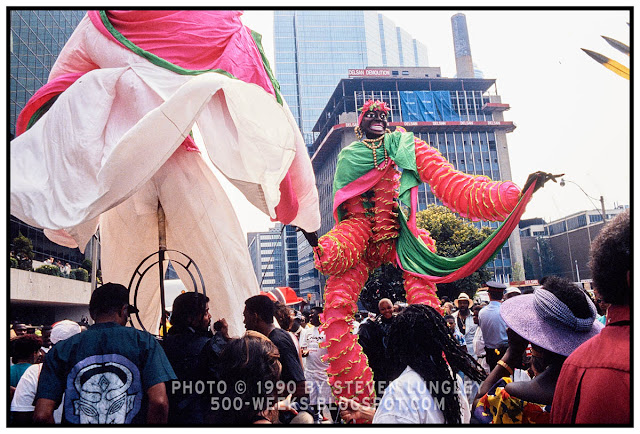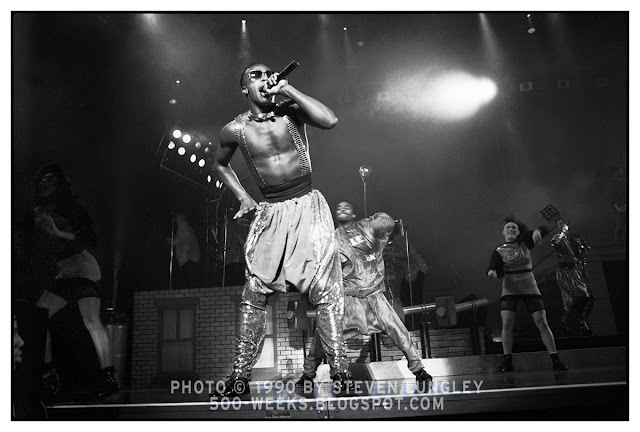Caribana in Toronto, 1990
500 Weeks #22
Caribana is an annual event in Toronto, and it is the largest, Caribbean-style masquerade event outside of the Caribbean.
As a contributing photographer to Share – a self-described Black and Caribbean community newspaper – the multi-week affair, filled with all kinds of events, competitions and parties, culminating in the huge Parade of Bands finale – were the highlight of the year. The paper would be filled with ads for all the events and parties and the publication would frequently add pages and a cover featuring colour photos. In that era of newspapers, full colour photos were a lot of extra expense and therefore, very rare occurrences.
The Parade of Bands is comprised of Mas – short for masquerade – bands playing Caribbean music, while showcasing their King and Queen in elaborately designed costumes and being supported by their mas players. Mas players purchase one of the bands costumes and get to be part of the parade, dancing along behind the flatbed truck their band is being transported on. The whole parade is a competition with many categories, and every band, it’s music, theme, costumes, creativity and energy are judged.
Party poops.

This was my first experience covering the parade as a member of the media, and only my second all-day assignment, the first being the Nelson Mandela visit. I had a basic understanding of how to pace myself for a whole day affair, what supplies to bring and to pursue images that told the story of the day. It was important to capture the moments in context, not just close-ups of the costumes. The editor wanted to show the participants, the crowd, the joy, the vendors, the garbage, the police, everything. This is why wide-angle lenses are so popular in photojournalism. You want to show the setting the participants are in. I was also not the only photographer working for the paper. Others were concentrating on the full costumes, while I was the details photographer.
It was very tiring to be out in the hot sun all day, hauling around a stuffed camera bag while trying to work inside tightly packed crowds. Your feet get very tired, it’s hard to find a bathroom, and when you do, you have to bring all the camera gear in with you. Getting food is an issue, because if you leave the parade route you might miss something great. I relied on the street vendors myself. I also never stayed in one spot for very long. I walked up and down a long stretch of the parade route, looking for images that tell different angles of the story.
For such a colourful event, I think the B&W works really well. In future years I shot more colour, but feel that the B&W has a timeless appeal. I also look at the youngsters in these images – which are now 30 years old - and wonder if they still come to the parade and if they bring their own children.
Technical stuff: Pentax K1000 with 50mm f/2.0 and Sunwa 28mm f/2.8 lenses using Kodak Ektapress 5115 colour negative film. Nikon FE 35mm camera body with 28mm Series “E” f/2.8, 50mm f/1.8, and 85mm f/2.0 lenses using Kodak TMAX 400 B&W negative film.
By this time I was using a bulk loader to save money on film costs. A standard roll of 35mm film provides 36 exposures and measures about 1.5 M (5 feet) in length. Rather than buying individual 36-exposure cartridges, I started buying 30.5 m (100-foot) rolls, taking it to the darkroom and putting it inside a bulk loader. It’s a small device that allows for loading individual cartridges in whatever length the user wants. Not too long, because then the film won’t fit into the camera, but it is great if you want rolls of shorter length, such as 12-15 frames. I usually stuck to 35-36 frame rolls. I kept rolling my own B&W film for years.


































Comments
Post a Comment